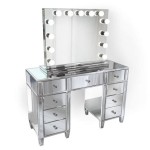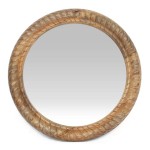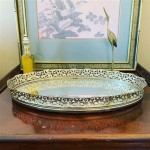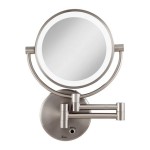How to Fix a Mirror-Tiled Bathroom Wall
Mirror tiles are a popular choice for bathroom walls, adding a touch of elegance and making the space feel larger. However, these tiles can sometimes become damaged, requiring repair. Fixing a mirror-tiled bathroom wall requires careful handling and specific techniques to avoid further damage. Here is a step-by-step guide on how to repair a mirror-tiled bathroom wall.
1. Assess the Damage
The first step is to carefully assess the damage. Determine the extent of the problem and the best course of action.
- Cracked Tiles: If the damage is a simple crack in a tile, you might be able to repair it with epoxy resin.
- Chipped Tiles: A chipped tile might require replacement, depending on the severity of the damage.
- Loose Tiles: Loose tiles can be reattached using tile adhesive.
- Grout Issues: Damaged or missing grout can be repaired with grout sealant or by re-grouting the entire wall.
2. Gather Your Supplies
Once you have assessed the damage, assemble the necessary materials for the repair:
- Safety Glasses: These protect your eyes from flying debris.
- Gloves: Gloves are crucial for handling epoxy resin and other adhesives.
- Chipping Hammer and Chisel (if replacing tiles): These tools help to remove damaged tiles safely.
- Epoxy Resin (for cracked tiles): Choose a strong, clear epoxy resin.
- Tile Adhesive (for loose tiles): Select a high-quality tile adhesive designed for use in bathrooms.
- Grout Sealer or Grout (for grout repair): Choose a grout color that matches the existing grout.
- Spatula or Trowel: These tools are essential for applying epoxy, adhesive, and grout.
- Cleaning Cloth: A cleaning cloth is needed for wiping excess adhesive or epoxy.
- Masking Tape: Masking tape can be used to protect surrounding areas from accidental spills.
3. Preparing the Area
Before starting the repair, it's vital to prepare the area for a smooth process.
- Clear the Area: Remove any furniture or items that could obstruct the repair.
- Cover the Surrounding Area: Protect adjacent surfaces with plastic sheeting or drop cloths.
- Clean the Damaged Tile: Thoroughly clean the affected area with warm, soapy water. Ensure the tile surface is dry before proceeding.
4. Repairing Cracked Tiles
If the damage is a simple crack in a tile, you can repair it using epoxy resin:
- Clean the Crack: Thoroughly clean the crack with rubbing alcohol to ensure proper adhesion.
- Apply the Epoxy Resin: Follow the manufacturer's instructions carefully to mix the epoxy ratio properly. Apply the resin to the crack, filling it completely.
- Smooth the Surface: Use a small spatula to ensure the epoxy is evenly distributed and smooth.
- Allow to Dry: Let the epoxy resin dry completely according to the manufacturer's instructions.
5. Replacing Chipped Tiles
If the tile is chipped beyond repair, you will need to replace it. Follow these steps:
- Remove the Damaged Tile: Using a chipping hammer and chisel, gently remove the chipped tile. Be careful not to damage the surrounding tiles.
- Prepare the New Tile: Clean the back of the new tile with soapy water to remove any dust or debris.
- Apply Tile Adhesive: Apply tile adhesive to the back of the new tile, ensuring it covers the entire surface.
- Position the Tile: Carefully position the new tile in the space where the old tile was removed. Use a level to ensure it is straight.
- Press Firmly: Press down firmly on the new tile to ensure good adhesion. Make sure you are pressing down on the entire tile, not just the edges.
- Allow to Dry: Allow the adhesive to dry completely before proceeding to the next step.
6. Reattaching Loose Tiles
If the tile is loose, you can use tile adhesive to reattach it:
- Clean the Tile and Surface: Thoroughly clean the back of the loose tile and the wall surface with rubbing alcohol.
- Apply Tile Adhesive: Use a small spatula to apply a thin layer of tile adhesive to the back of the loose tile.
- Position the Tile: Gently press the tile back into place, ensuring it is level and straight.
- Press Firmly: Use a rubber mallet to gently tap the tile to ensure it is securely attached to the wall.
- Clean Excess Adhesive: Wipe away any excess adhesive with a damp cloth.
- Allow to Dry: Allow the adhesive to dry completely before proceeding to the next step.
7. Repairing Grout
Damaged or missing grout can be repaired with grout sealant or re-grouting.
- Clean the Grout: Clean the existing grout with a grout cleaner to remove dirt and grime.
- Apply Grout Sealer: If the grout is simply cracked or damaged, apply grout sealant. This seals the cracks and helps protect the grout from further damage.
- Re-grout: If the grout is missing or significantly damaged, you will need to re-grout the entire wall. Use a grout trowel to apply the grout, ensuring it is evenly distributed.
- Let the Grout Dry: Allow the grout to dry completely before cleaning up any excess grout.

How To Hang Mirrors On Tile 3 Ways A Bonus The Palette Muse

How To Hang Mirrors On Tile 3 Ways A Bonus The Palette Muse

Diy Mosaic Tile Bathroom Mirror Centsational Style

Diy Mosaic Tile Bathroom Mirror Centsational Style

Diy Mosaic Tile Bathroom Mirror Centsational Style

How To Mosaic Tile A Mirror Caffeine And Cabernet

Diy Mirror Frame With Glass Mosaic Tile Armchair Builder Blog Build Renovate Repair Your Own Home Save Money As An Owner

Diy Mosaic Tile Bathroom Mirror Centsational Style

How To Mosaic Tile A Mirror Caffeine And Cabernet

How To Remove A Mirror Glued The Wall Forbes Home








